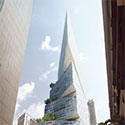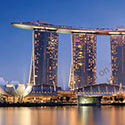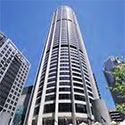Filter by
Note: As this project is under construction, the data is based on the most reliable information currently available. This data is thus subject to change until the building has completed and all information can be confirmed and ratified by the CTBUH.
This project is a renovation and will replace AMP Centre
You must be a CTBUH Member to view this resource.
Quay Quarter Tower
Building
Under Construction
2000
office
216.0 m / 709 ft
54
2
102,000 m² / 1,097,919 ft²
The Design Engineer is usually involved in the front end design, typically taking the leadership role in the Schematic Design and Design Development, and then a monitoring role through the CD and CA phases.
Other Consultant refers to other organizations which provided significant consultation services for a building project (e.g. wind consultants, environmental consultants, fire and life safety consultants, etc).
Material Supplier refers to organizations which supplied significant systems/materials for a building project (e.g. elevator suppliers, facade suppliers, etc).
You must be a CTBUH Member to view this resource.
Usually involved in the front end design, with a "typical" condition being that of a leadership role through either Schematic Design or Design Development, and then a monitoring role through the CD and CA phases.
The Design Engineer is usually involved in the front end design, typically taking the leadership role in the Schematic Design and Design Development, and then a monitoring role through the CD and CA phases.
The main contractor is the supervisory contractor of all construction work on a project, management of sub-contractors and vendors, etc. May be referred to as "Construction Manager," however, for consistency CTBUH uses the term "Main Contractor" exclusively.
Other Consultant refers to other organizations which provided significant consultation services for a building project (e.g. wind consultants, environmental consultants, fire and life safety consultants, etc).
Material Supplier refers to organizations which supplied significant systems/materials for a building project (e.g. elevator suppliers, facade suppliers, etc).
AMP Capital Confirmed as Diamond Sponsor
18 May 2017 - Conference Activity

30 October 2017 | Sydney
Bringing Lifestyle to the Workplace
Central Sydney is changing from a business district, traditionally focused on work, to increasingly become a city lifestyle district that offers a range of experiences....
 3XN_Adam Mørk2.jpg)
30 October 2017
Connecting the City: People, Density & Infrastructure
CTBUH 2017 Conference Speakers
The future of humanity on this planet relies on the collective benefits of urban density; reducing both land consumption and the energy needed to construct...

30 October 2017 | Sydney
Bringing Lifestyle to the Workplace
Central Sydney is changing from a business district, traditionally focused on work, to increasingly become a city lifestyle district that offers a range of experiences....

30 October 2017 | Sydney
Future of Work: The Shape of Revolutionary Thinking
Nowadays people can work anywhere at any time, and the paradigm of workers being housed within the four walls of the traditional workspace is being...

30 October 2017 | Sydney
Kim Nielsen of 3XN is interviewed by Chris Bentley during the 2017 CTBUH Australia Conference.

30 October 2017 | Sydney
Quay Quarter Tower: Humanizing the High-Rise
Quay Quarter Tower (QQT) will create a stunning new building on the Sydney skyline that sets new benchmarks in office tower design globally and creates...

30 October 2017 | Sydney
The Role of Design Competitions in Shaping Sydney's Public Realm
Tall buildings often take more than they give back, frequently exacerbating local environmental conditions, overshadowing streets and public spaces, creating wind tunnels, and impacting the...
 3XN_Adam Mørk2.jpg)
30 October 2017
Connecting the City: People, Density & Infrastructure
The future of humanity on this planet relies on the collective benefits of urban density; reducing both land consumption and the energy needed to construct...
 3XN_Adam Mørk.jpg)
30 October 2017
The under-design Quay Quarter Tower will create a stunning new building on the Sydney skyline that sets new benchmarks in office tower design globally and...
Subscribe below to receive periodic updates from CTBUH on the latest Tall Building and Urban news and CTBUH initiatives, including our monthly newsletter. Fields with a red asterisk (*) next to them are required.
View our privacy policy